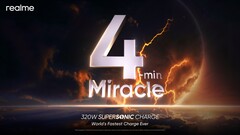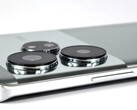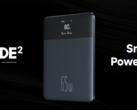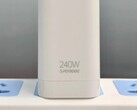Realme has announced that it has broken smartphone charging records yet again with its new SuperSonic technology. The OEM asserts that it surpasses its predecessor by a substantial margin, with a top rate of 320 watts (W).
The OEM has unveiled its initial prototype, which includes a "Pocket Cannon" power brick. It is comparable in size to its 240W SuperVOOC counterpart (like this one on Amazon.in) thanks to a new power density value estimated at 3.3 watts per centimeter (W/cm).
It is rated to charge its compatible battery in 4 minutes and 30 seconds at the fastest, thereby beating Redmi's 300W system. Then again, the battery in question is just 4,400mAh in capacity, whereas those of real-life smartphones trend toward the much more massive.
Accordingly, reports of this new 4-cell, flexible battery being ready for inclusion in the next-gen GT7 Pro might be a little optimistic. Nevertheless, Realme is confident that 320W SuperSonic, demonstrated alongside the OEM's new AirGap near-field wireless charging tech, will break new ground in mobile device charging.






























